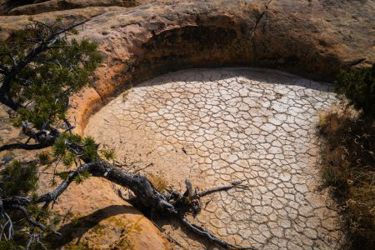U.S. Groundwater Drying Up At ‘Rapid And Accelerating' Rate


As a warming climate intensifies drought and increasing consumption around the country stresses systems, a recent study has uncovered more bad news for the country’s drinking water supplies.
“Many of America’s critical sources of underground water are in a state of rapid and accelerating decline,” The Hill reported. “More than half of the aquifers in the United States (53 percent) are losing water… And in about 1 in 8 American aquifers — roughly 12 percent — the collapse of underground water levels has sped up during the 21st century.”
Concerns around depleting groundwater in the U.S. have been on high for some time, but this latest research, which was published in Nature, has underscored the potential impacts on the agricultural industry as well as the global nature of the problem.
“Groundwater supplies are dwindling in aquifers around the world, a groundbreaking new study found,” Inside Climate News noted. “Many agricultural centers face an uncertain future as a warming climate threatens water availability around the world.”
The new research on groundwater loss has also identified the most severely impacted states in the U.S., with the nation’s breadbasket facing significant threats.
“The collapse of groundwater reserves beneath California’s Central Valley stands out as particularly severe — even among all the global losses,” per a follow up report from The Hill. “Currently, California accounts for 21 percent of total groundwater usage in the U.S., and draws about 67 percent of its fresh water from its groundwater reserves. That reliance is taking a toll: Of California’s 183 groundwater basins evaluated by the Nature team, three-quarters are in decline — and for many, that decline is occurring very quickly.”
That report identified Texas, Idaho, Arizona, Utah, and Mississippi as the other severely impacted states, with Oklahoma, New Mexico, and Kansas also mentioned.
On a more positive note, the research also identified some regions that have been able to recover from depleting groundwater issues.
“West of Tucson, Ariz., water managers diverted excess water from the Colorado River to the Avra Valley, allowing it to filter back into the underground aquifer of the same name — a once-declining, thousands-year-old water source that is now regaining about half an inch of water per year,” per the original report in The Hill. “And in New Mexico, a channel connects the Colorado River to the San Juan, a tributary of the Rio Grande — enabling Albuquerque to meet more of its municipal needs with surface water and relieving pressure on groundwater reserves.”
With the new research identifying the severity of the problem and the most impacted regions, perhaps more water systems will work to apply similar solutions to those making a difference for Arizona and New Mexico.
To read more about how water systems adapt to depleting supplies, visit Water Online’s Water Scarcity Solutions Center.
